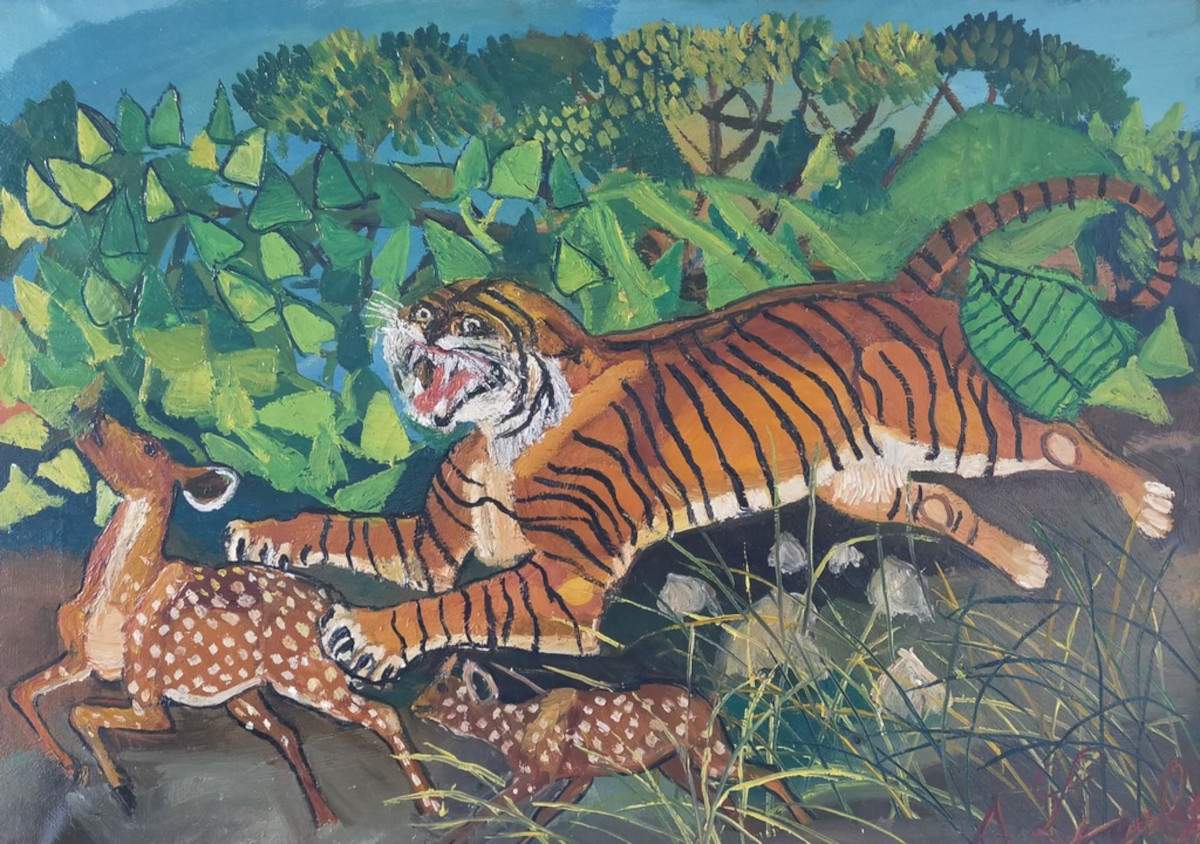In Barga, reality through the exhibition on Antonio Ligabue and Renato Guttuso
The works of Antonio Ligabue (Zurich, 1899 - Gualtieri, Reggio Emilia, 1965) and Renato Guttuso (Bagheria, Palermo, 1911 - Rome, 1987) are presented from June 22 to Sept. 30, 2024, at the Stanze della Memoria Museum in Barga , Lucca, on the occasion of the exhibition Dalla realtà al realismo: Antonio Ligabue e Renato Guttuso. Promoted by the City of Barga with the support of the Fondazione Cassa di Risparmio di Lucca and the patronage of the Regional Council of Tuscany and the Province of Lucca, the exhibition is organized by Galleria de’ Bonis of Reggio Emilia.
The exhibition will include some 20 works by the two artists. Antonio Ligabue recounted his personal reality, that of the Swiss and then Emilian landscapes in which he was deeply immersed. The artist painted the countryside and farm work, but also the wilder and more instinctive side of nature, through animals and their microcosm. In the animals, he finds something of his own nature that also returns in his famous self-portraits, which are nothing but a way of looking inside himself. On display in Barga is one of his iconic tigers, a mare with her foal, and a subject more classic than ever in his production: the Return from the Fields, from 1959.
Renato Guttuso, the master of Social Realism, described reality starting, instead, from society and current events. The artist narrated Italian history and politics: he painted an Italy in the making, in its institutional as well as everyday aspects, portraying public figures, sportsmen, workers and ordinary people. Still lifes will also be presented at the Stanze della Memoria Museum. Two oil landscapes will be exhibited, and some rare works on paper complete the project: the notes of a trip to Egypt that Guttuso made in 1959 with Giovanni Pirelli and some sketches for theatrical costumes, which testify to Guttuso’s happy activity for the theater. Both artists recounted reality as few have been able to do, entering deeply into it, each rich in his own cultural background, personal sensitivity and experience.
The exhibition, realized with the support of Renaissance Tuscany Il Ciocco Resort & Spa, will be accompanied by a catalog published by vanillaedizioni, and will be open to the public free of charge Thursday through Sunday from 4 to 8 p.m.
Notes on the artists
Renato Guttuso (Bagheria, Palermo, 1911 - Rome, 1987) lived much of his life in Rome and then in Velate, in the province of Varese. He was one of the exponents of Italian Social Realism and among the members of the “Corrente” art group, which rejected the academic style. Guttuso traveled in Europe, crossing different cultural environments, and established a beautiful friendship, made of mutual exchange, with Pablo Picasso. Very interesting is his extensive production for the theater, as set and costume designer, for productions of the highest level. Guttuso was always very politically engaged: he militated in the ranks of the resistance and, in 1976, was elected to the Senate of the Republic for the CP. This social and political sensitivity was reflected in many of his works and gave rise to some of his greatest masterpieces. His life, intense and exuberant, was reflected in many of his works with a lively and licentious flavor. Exhibitions have been dedicated to Guttuso, one of Italy’s best-known artists abroad, and his paintings are housed in Italy’s greatest museums: from the Uffizi in Florence to MAMBO in Bologna and the Palazzo della Pilotta in Parma.
Antonio Ligabue (Zurich, Switzerland, 1899 - Gualtieri, Reggio Emilia, 1965) was born in Switzerland into a very difficult family background and was soon placed in the care of a new family, which was also in dire economic straits. Ligabue was afflicted by several chronic illnesses related to poverty and malnutrition that marked his entire existence. This difficult and disadvantaged start was also reflected in his character, which became unstable and short-tempered and led him to frequently change schools and jobs in agriculture, in a constantly precarious environment. His lack of a proper cultural and artistic education was always made up, however, by a great expressive drive and a lively curiosity about the world, which he investigated through his personal and colorful lens. Following a violent quarrel, during which he allegedly assaulted his adoptive mother, Ligabue was expelled from Switzerland and sent to Italy, to Gualtieri, in the province of Reggio Emilia, his father’s place of origin. It was here that he met the painter Marino Mazzacurati, who immediately noticed his talent and helped him develop it. Ligabue always continued to work as a farmhand or laborer, living in contact with nature and animals, both farmyard and wild. These were his great inspiration throughout his life. Several documentaries and films were dedicated to the incredible figure of Ligabue, the last of which was Giorgio Diritti’s great success, I wanted to hide, from 2020, starring Elio Germano.
Image: Ligabue, Tiger with Fawns (1960; oil on canvas, 50 x 70 cm). Courtesy of Galleria de’ Bonis
 |
| In Barga, reality through the exhibition on Antonio Ligabue and Renato Guttuso |
Warning: the translation into English of the original Italian article was created using automatic tools. We undertake to review all articles, but we do not guarantee the total absence of inaccuracies in the translation due to the program. You can find the original by clicking on the ITA button. If you find any mistake,please contact us.



























